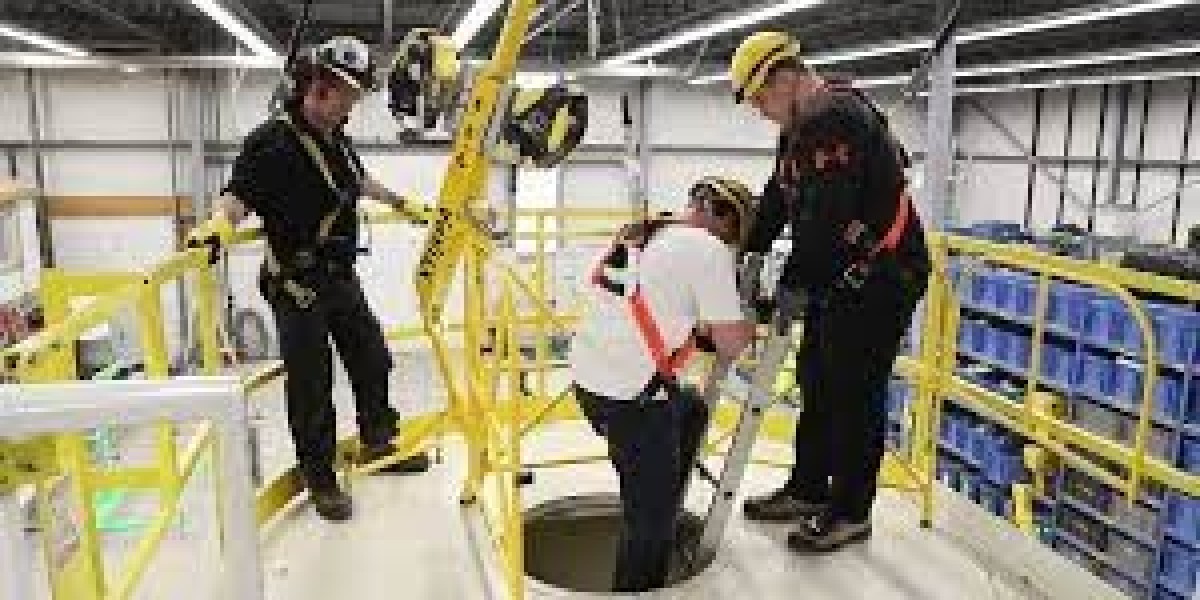Industrial confined space training onsite is not just a requirement—it's a life-saving investment for businesses operating in hazardous environments. Whether you run a manufacturing plant, refinery, utility service, or chemical processing unit, your employees face serious dangers when entering confined spaces. From toxic gases and engulfment risks to limited oxygen and poor visibility, these environments demand specialized safety measures. Onsite training equips your team with the knowledge and skills to operate confidently, mitigate risks, and respond effectively to emergencies.
In this article, we’ll explore why onsite confined space training is crucial, its compliance benefits, what it includes, and how your organization can benefit from hosting tailored training sessions at your own facility.
Why Industrial Confined Space Training Onsite Is Critical
Confined spaces such as tanks, silos, tunnels, vaults, and pipelines are essential to industrial operations but carry inherent hazards. Workers entering these spaces are exposed to:
Oxygen-deficient atmospheres
Toxic or flammable gases
Physical entrapment or engulfment
Mechanical or electrical equipment risks
By conducting onsite industrial confined space training, companies ensure their staff is fully aware of the dangers and the correct procedures for safe entry, work, and rescue. This training significantly reduces the risk of injury, fatalities, and regulatory penalties.
OSHA and Regulatory Compliance
One of the primary reasons to invest in industrial confined space training onsite is to stay compliant with OSHA’s 29 CFR 1910.146 and other relevant safety standards. OSHA mandates that employers must:
Identify permit-required confined spaces
Develop a written confined space program
Provide training to employees involved in confined space entry
Designate entry supervisors, attendants, and entrants
Equip workers with PPE, gas detectors, and rescue tools
Failure to comply can lead to severe fines, operational shutdowns, and most importantly, avoidable accidents. Onsite training aligns your procedures with regulatory frameworks and prepares your workforce to meet safety expectations confidently.
Key Benefits of Onsite Training at Your Facility
Unlike offsite training programs, onsite industrial confined space training provides several practical advantages:
1. Familiarity with Actual Work Environment
Your team trains in the exact environment they’ll be working in—tanks, silos, or underground pits specific to your facility. This increases training relevance and retention.
2. Customized Training Modules
Training is tailored to the specific types of confined spaces, hazards, and equipment present in your operations. From vertical entry using tripods to horizontal access points, your staff gets site-specific instruction.
3. Hands-On Rescue Simulations
Emergency drills using actual spaces and tools lead to better preparation. Workers practice real-time rescue operations using ropes, harnesses, SCBA units, and ventilation devices.
4. Reduced Travel and Downtime
Instead of sending employees offsite for multiple days, onsite sessions minimize disruption to your operations while maximizing productivity.
5. Team-Based Training
Entire teams can train together—entrants, attendants, and supervisors—which fosters communication, teamwork, and understanding of each other’s responsibilities.
Who Needs This Training?
Industrial confined space training onsite is vital for:
Maintenance personnel
Plant workers
Safety officers
Emergency response teams
Supervisors and facility managers
Every individual involved in entering, monitoring, or supervising confined spaces must understand entry protocols, atmospheric testing, hazard mitigation, communication procedures, and rescue techniques.
Core Topics Covered in Onsite Training
A well-structured onsite industrial confined space training session should include:
Definition of permit-required and non-permit confined spaces
Atmospheric hazards: toxic gases, oxygen deficiency/enrichment
Air monitoring techniques using multi-gas detectors
Lockout/Tagout (LOTO) procedures
Use of personal protective equipment (PPE)
Rescue planning and emergency response
Entry permit procedures and record-keeping
Roles and responsibilities of entrant, attendant, and supervisor
Simulated entry and rescue exercises
This comprehensive approach ensures workers not only understand the theory but also master the practical aspects of confined space operations.
How to Choose the Right Onsite Training Provider
To ensure maximum effectiveness and compliance, partner with a provider that:
Is OSHA-certified and experienced in industrial training
Offers customized modules tailored to your facility’s layout
Brings portable training equipment (tripods, manholes, fans, detectors)
Has qualified instructors with real-world rescue experience
Provides post-training assessments and certification
A quality training provider ensures that your workforce walks away with confidence, not just a certificate.
The Cost of Not Training Onsite
Skipping or postponing industrial confined space training onsite may result in:
Hefty OSHA penalties
Loss of productivity due to workplace injuries
Increased insurance costs
Damaged reputation and trust among employees and clients
Legal liabilities in case of accidents or fatalities
The cost of a training program is minimal compared to the financial, operational, and human costs of an incident. Onsite training is an investment in your people and the future of your business.
Conclusion: Protect Your Workforce with Onsite Training
Industrial confined space training onsite isn’t optional—it’s essential for protecting lives, achieving compliance, and maintaining operational excellence. When your team is trained where they work, using their own equipment and facing their specific hazards, they’re more confident and capable in any situation.
Don’t wait for an incident to realize the value of safety education. Contact us today!



